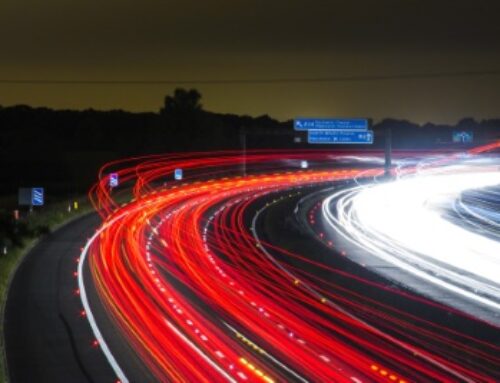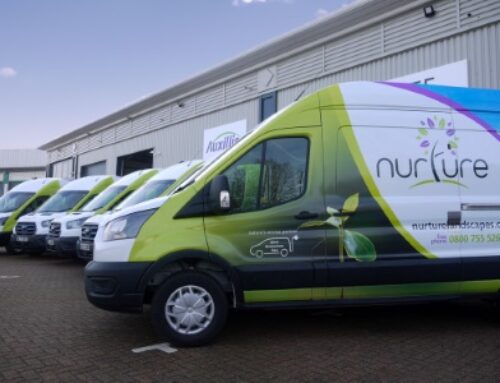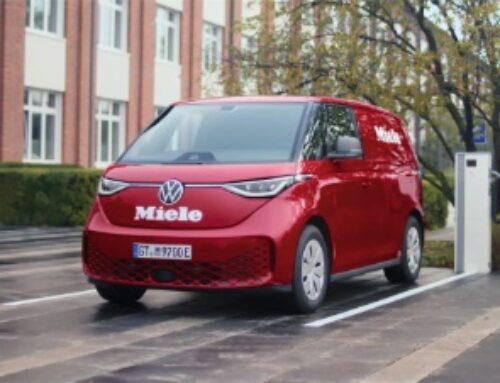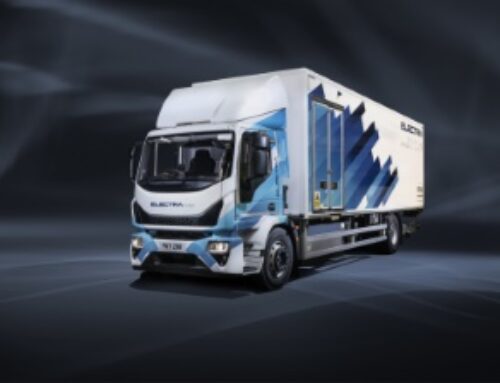TotalEnergies: AdBlue and the green agenda
 TotalEnergies UK has outlined the benefits of its AdBlue and lubricant offerings in helping to control emissions, as well as offering its perspective on the wider sustainability of the transport sector and the development of renewable fuels.
TotalEnergies UK has outlined the benefits of its AdBlue and lubricant offerings in helping to control emissions, as well as offering its perspective on the wider sustainability of the transport sector and the development of renewable fuels.
Advances in diesel products are offering drivers and fleet managers a wider range of sustainable choices, says TotalEnergies, including its AdBlue range to help fleets reduce their nitrogen oxide (NOx) emissions.
“Nitrogen oxide is a harmful gas that can damage the human respiratory system, and promotes the formation of pollution and ground ozone, which is harmful to the environment and human health,” said Tom Hyde, technical support manager for TotalEnergies (pictured, right).
“As a result, NOx emissions are becoming more of a priority for eco-conscious drivers and fleet operators, given the increase in emissions tests, environmental legislation, and clean air zones we’re seeing in the UK.”
With AdBlue now widely used in diesel cars as well as HGVs, LCVs, buses and coaches equipped with selective catalytic reduction (SCR) technology, it plays a key role in ensuring the smooth running of vehicles and helping to reduce tailpipe emissions.
AdBlue is available from TotalEnergies in bulk, IBC, barrel and small packs for commercial vehicles. It is used to bring vehicles into line with the European Union’s Euro VI emission standard.
 The company’s AdBlue offering meets the latest HGV manufacturer specifications; and TotalEnergies also offers Clearnox, an additive suitable for fleets including buses, coaches and HGVs. Dissolved in AdBlue, it prevents clogging due to crystallisation of reaction products (mainly cyanuric acid) upstream of the SCR denox systems to improve its properties in frequent-stop and cold-climate conditions.
The company’s AdBlue offering meets the latest HGV manufacturer specifications; and TotalEnergies also offers Clearnox, an additive suitable for fleets including buses, coaches and HGVs. Dissolved in AdBlue, it prevents clogging due to crystallisation of reaction products (mainly cyanuric acid) upstream of the SCR denox systems to improve its properties in frequent-stop and cold-climate conditions.
Clearnox prolongs the life of diesel fleets and dramatically reduces exhaust clogging due to crystallisation deposits, says TotalEnergies. The company cites tests showing that vehicles using Clearnox can drive for 50,000 kilometres without any clogging issues, and its estimations show that these sorts of vehicles experience exhaust clogging issues up to 40 per cent of the time.
With the 2050 net zero deadline looming, the commercial vehicle landscape in the UK is changing fast, points out Tom Hyde.
“We are at a turning point in the commercial vehicle industry’s history,” he said.
“According to research released in 2022, HGVs accounted for 19 per cent of road transport emissions in the UK, making reform to this sector a significant piece of the UK’s sustainability puzzle. The phased transition from fossil fuels for all vehicles, including HGVs, will require investment, new infrastructure, and the support of policymakers.
“At a base level, the UK needs to provide practical and readily available substitutes to traditional fuel sources – and these do exist. Hydrogen or renewable biomethane, for example, are viable alternatives, and there are projects ongoing to develop a hydrogen ‘ecosystem’ for transportation in Europe, such as TotalEnergies’ partnerships with Daimler Truck AG and Air Liquide.”
A major positive to these fuel sources is that vehicles operate and are refuelled in a similar way to the fossil fuel powered HGVs and vehicles we see today, says Tom – meaning minimal alterations to drivers’ working patterns.
 “The hurdle will be ensuring both supply chain resilience and cost-effectiveness in order to encourage ubiquity. While the UK government have invested in a number of initiatives, the role of hydrogen itself on the path to net zero is still far from clear.
“The hurdle will be ensuring both supply chain resilience and cost-effectiveness in order to encourage ubiquity. While the UK government have invested in a number of initiatives, the role of hydrogen itself on the path to net zero is still far from clear.
“As ‘green’ hydrogen (produced using renewable energy) is not yet at the scale necessary for widespread commercialisation, so-called ‘blue’ hydrogen is seen by many as a stop gap solution, despite its fuel intensive production process.
“The debate over electrification, meanwhile, continues. Charging infrastructure (or lack thereof) is often cited as an obstacle to electric truck adoption – but there have been developments in this sector, and trucks designed for base-to-base use are on the market.
“The weight and size of most heavy-duty batteries is another issue, as it could limit the number of goods that HGVs can carry. This is a problem that could hinder the electrification of fleets unless the development of these technologies is accelerated.”
With renewable-powered transport and electrification on the horizon, ensuring best servicing practice and using the best products available in the meantime, such as high-quality, fuel-efficient lubricants, is a step that HGV drivers and manufacturers can take now to ensure they’re maximising both their fleet’s productivity and sustainability, Tom contends.
“Major strides have been made over the past few years in terms of innovating engine oils and lubricants,” he continued.
“The result is increased uptime and lower maintenance costs – particularly through products such TotalEnergies’ Rubia TIR 9900 FE 5W-30 – thanks to reduced friction and viscosity of lubricants.
“These efficiency gains provide both emissions reductions and cost control benefits which equate to between two per cent and three per cent increases in fuel efficiency for commercial vehicles.”
He concluded: “Reaching net zero will require a great deal of synergy between both public and private sectors, and is something that industry, government and regulators will have to work in partnership to achieve. Our priority as a sector needs to be investing in new technologies and energy sources for long term, while ensuring fleets are maintained and operated as sustainably as they can be today.”










